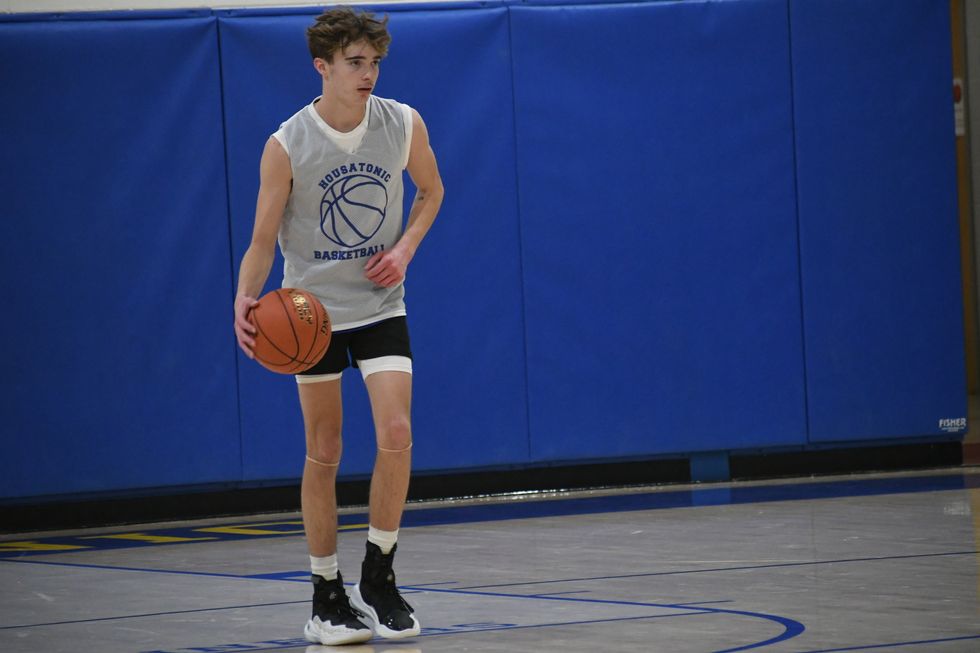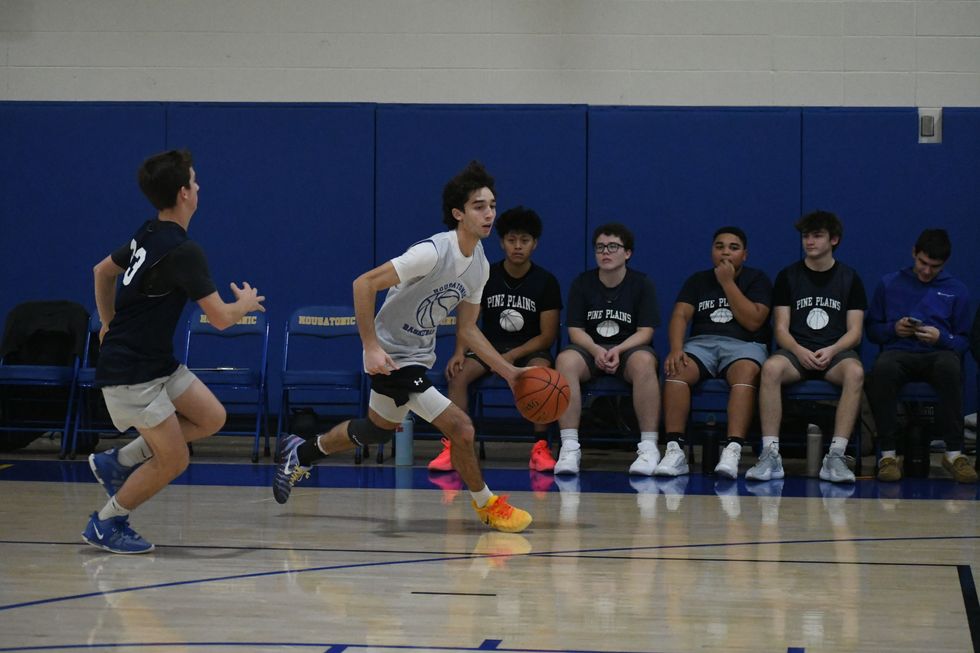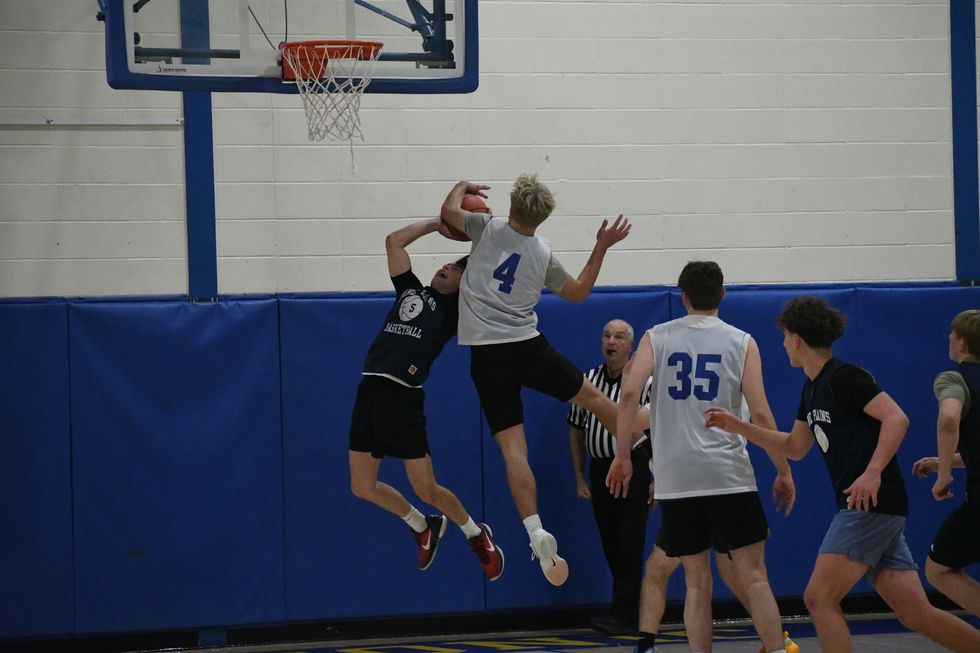First round of grant money awarded for high-speed internet

Map of locations to be served by recent grants.
portal.ct.gov/deep

Map of locations to be served by recent grants.
Several towns in the Northwest Corner are poised to receive a boost to their broadband infrastructure due to a recent set of grants administered by the Department of Energy and Environmental Protection (DEEP).
In a joint press release on Oct. 11, Governor Ned Lamont (D) and DEEP Commissioner Katie Dykes announced that $28 million in funds will be allocated to 88 municipalities under the first round of the state’s ConneCTed Communities Grant Program.
Because award money will be distributed to internet service providers (ISPs) and not the towns themselves, towns had to partner with providers to be eligible for the grants. Locations in Norfolk, Salisbury and Falls Village are set to benefit from Comcast Communications’ awarded funds, while Frontier Communications was granted $954,909 to install fiber optic cable to 148 locations in Sharon, with some abutting the Cornwall town line.
“The expansion of broadband infrastructure will make Connecticut’s towns and cities stronger, more resilient, and better positioned to engage in today’s increasingly digitized world,” Governor Lamont stated in the press release.
Sharon
While Jill Drew, co-chair of the Sharon Connect Task Force (SCTF), was pleased to see money allocated towards improving her town’s high-speed internet, she was surprised that Sharon’s application was denied to reimburse most of the $1.6 million the town spent on its own project to bring broadband to unserved residents.
“We are disappointed that the state chose to put off the decision of whether to reimburse the town,” Drew said in a statement.
Of the $40.8 million in the American Rescue Plan Act (ARPA) Capital Project Fund, $12.8 million remains, which DEEP will administer for a second round of grants on a first come, first serve basis. Drew maintained that Sharon will quickly resubmit.
After hearing stories about Sharon residents suffering from lacking high-speed internet, such as a school teacher teaching zoom classes during the pandemic from a parked car outside J.P. Gifford in Sharon, the SCTF dedicated itself to bringing “universal access to people who lived in Sharon who otherwise it would make no business sense for a company to pay to connect them.”
“That’s why we need government funding,” Drew added.
In 2023, Sharon partnered with Comcast to “provide high-speed internet connections to 272 homes along 28.5 miles of Sharon roads that had previously not had broadband access,” according to the SCTF. By the time the ConneCTed Communities grants applications were open, the project was largely complete, which is why Sharon’s application was denied in the first round, Drew explained. While there are no guarantees, she said, she hopes for better results in the second round.
As for Frontier’s fiber optic project, she is excited about the prospect of competition between providers in town, which will bring better service, she said. On the other hand, though, she hopes that Frontier’s award doesn’t “box out the town receiving funding for its own successful project getting everybody connected.”
“The Town of Sharon welcomes competition so our residents can decide which internet provider has the best service at the best price,” said Casey Flanagan, Sharon’s First Selectman, though he also maintained he is hopeful the new application for reimbursement will be accepted.
Drew noted that Frontier owns all the copper wire landlines in the state, and she’s wary of the ISP using the project to try and edge out telephone landlines in favor of fiber optic cable.
“Frontier will need to keep its copper wire for rural residents,” said Drew, citing the need for alternative communications measures in households without reliable cellular service.
Kent
Other town leaders found themselves looking at these grants from the sidelines. Lynn Worthington, selectman and chair of the Kent Broadband and Mobile Communication Working Group, pointed out that the funding opportunities have “rules [that] make it difficult for municipalities to apply.”
In Kent’s case, Spectrum and Frontier have been unresponsive, so the town has been ineligible to apply for the ConneCTed Communities grants. Worthington said that Spectrum has always been difficult to reach, as has Frontier since a merger was announced with Verizon.
Another funding pathway, called the Broadband Equity, Access, and Deployment (BEAD) program, has been held up during a data review by the National Telecommunications and Information Administration.
“Basically, nothing has happened with BEAD since July,” remarked Worthington.
To engage the public, the Kent group will focus its efforts on outreach strategies to educate residents on the costs of being left behind. “Fiber optic is the future,” Worthington said. “The existing service isn’t going to be adequate in four to five years.”
Overall, Worthington believes that discourse between towns and across the state is paramount to a better connected future: “We could all learn from each other,” she said.
The Torrington Transfer Station, where the Northwest Resource Recovery Authority plans to expand operations using a $350,000 state grant.
TORRINGTON — The Northwest Resource Recovery Authority, a public entity formed this year to preserve municipal control over trash and recycling services in northwest Connecticut, has been awarded $350,000 in grant funds to develop and expand its operations.
The funding comes from the Department of Energy and Environmental Protection via its Sustainable Materials Management grant program. It is intended to help the NRRA establish operations at the Torrington Transfer Station as well as support regional education, transportation, hauler registration and partnerships with other authorities.
Founded by the City of Torrington in May 2025, the NRRA was established to oversee regional municipal solid waste management. Its creation followed a $3.25 million offer by USA Waste & Recycling to purchase the Torrington Transfer Station — a sale that would have privatized trash services in the region.
The proposed sale was initially approved by the MIRA Dissolution Authority, the entity responsible for dissolving the state’s former Materials Innovation and Recycling Authority, which owned the Transfer Station at the time. Before the transaction could close, the state intervened and directed that the facility’s operating permit be assigned to the NRRA to preserve a publicly controlled alternative.
MIRA has since dissolved, and the Transfer Station is currently operated by the state Department of Administrative Services. Many towns in northwest Connecticut have expressed interest in joining the NRRA. As of December, Torrington and Goshen were the only two municipalities in the authority.
At the Dec. 11 meeting of the Northwest Hills Council of Governments (COG) — a regional planning body representing 21 municipalities in northwest Connecticut — Director of Community and Economic Development Rista Malanca encouraged more towns to sign on.
“We need towns to join the Northwest Resource Recovery Authority to show your support, show this is what you want to do,” Malanca said.
Salisbury First Selectman Curtis Rand said his municipality is planning a town meeting in January to vote on a resolution to join the NRRA. Cornwall’s Board of Selectmen recently discussed scheduling a town meeting in the winter for the same purpose. Sharon, Falls Village and North Canaan have also expressed continued interest in pursuing a public option.
Kent is the northernmost member of the Housatonic Resource Recovery Authority, a regional solid waste authority representing 14 municipalities stretching south to Ridgefield. COG towns expressed interest in joining HRRA in 2024, but they were denied and set out to develop the NRRA.
“We also have been having conversations with the Capital Region Council of Governments and the Naugatuck Valley Council of Governments to think about how we can use existing resources, maybe some of these grant funds, to bring in shared resources or shared staffing that will help with some of the recycling coordinating efforts,” Malanca said.
With grant funds secured, NRRA aims to grow to a point that it can take over operations at Torrington Transfer Station to serve as a regional hauling hub. What happens to the trash after that has yet to be determined. Currently, it is being shipped to a landfill out of state. The existing municipal refuse hauling contracts that were established with the state expire in 2027.
The Salisbury Winter Sports Association (SWSA) will host its annual Junior Jump Camp, a two-day introduction to ski jumping, on Saturday and Sunday, Dec. 27 and 28, from 9 a.m. to 2 p.m. at Satre Hill in Salisbury.
The camp is open to children ages 7 and up and focuses on teaching the basics of ski jumping, with an emphasis on safety, balance and control, using SWSA’s smallest hill. No prior experience is required.
The cost is $50 per child and includes instruction and lunch on both days. For more information or to register, visit www.skireg.com/swsa-camp or email info@jumpfest.org
Jesse Bunce, first selectman of North Canaan.
LITCHFIELD — The Northwest Hills Council of Governments welcomed six newly elected municipal leaders Thursday, Dec. 11, at its first meeting following the 2025 municipal elections.
The council — a regional planning body representing 21 towns in northwest Connecticut — coordinates transportation, emergency planning, housing, economic development and other shared municipal services.
Barkhamsted First Selectman Meaghan Cook, Goshen First Selectman Seth Breakell, Kent First Selectman Eric Epstein, Norfolk First Selectman Henry Tirrell, North Canaan First Selectman Jesse Bunce and Torrington Mayor Molly Spino were each elected to their post in November.
They filled the seats of their predecessors on the COG, who were each given a toast of appreciation: Nick Lukiwsky (Barkhamsted), Todd Carusillo (Goshen), Marty Lindenmeyer (Kent), Matt Riiska (Norfolk), Brian Ohler (North Canaan) and Elinor Carbone (Torrington).
COG Executive Director Rob Phillips said the outgoing members were given a going away mug that read “You’re living the dream still.” Members voted to appoint Warren First Selectman Greg LaCava to fill a vacancy on the Council’s Executive Committee. COG members voted by paper ballot, and LaCava defeated Burlington First Selectman Doug Thompson for the vacant seat.
Ryan Segalla takes a fadeaway shot over a defender.
FALLS VILLAGE — Housatonic Valley Regional High School’s boys basketball team defeated Pine Plains High School 60-22 in a scrimmage Tuesday, Dec. 9. The non-league preseason game gave both sides an opportunity to run the court ahead of the 2025-26 varsity season.
HVRHS’s senior-heavy roster played with power and poise. The boys pulled ahead early and kept their foot on the gas through to the end.
By halftime the score was 33-8. Junior varsity players subbed in for the second half, but not before the starters got some in-game dunk practice. By the end Housatonic totaled 60 points to Pine Plains’ 22.

Nick Crodelle led the Mountaineers offensively with 13 points. Anthony Labbadia and Wyatt Bayer scored nine points each. Anthony Foley scored eight points. Owen Riemer and Ryan Segalla each scored seven points. Peyton Bushnell hit a three-pointer. Jaxon Visockis and Henry Berry each scored two points.
HVRHS begins Berkshire League competition on the road at Nonnewaug High School Tuesday, Dec. 16, with a 6 p.m. tip off.

